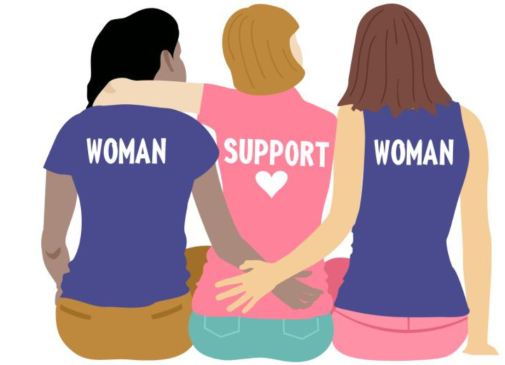
STEPHANIE TUBBS JONES
Stephanie Tubbs Jones is a name to remember. Born in Cleveland, Ohio to a factory worker and airline porter, and she was the youngest of three sisters. As the first woman from Ohio elected to Congress in 1998, from day one in Congress she made her mark for the betterment of women’s health. Stephanie was known to say: “All my life I had wanted to help others and I had been active in helping them.” She had a focus on children, education, and healthcare throughout her time in Congress. Staying true to her statement to the day of her passing, she made a difference during her life for countless others through her diligent work during her political career.
After receiving her bachelor’s degree in sociology, she when on to get her law degree from Case Western. Her interest in law continued and she served as an assistant general counsel and equal opportunity administrator of the northeast Ohio regional sewer district. She moved up the ranks quickly, gaining the experience to become an assistant prosecutor and trial attorney of Cuyahoga Country. She would soon work her way up to being elected as a congresswoman.
WOMEN DESERVE BETTER
Stephanie Tubbs Jones’ peers noticed how talented and passionate she was about children, education, and healthcare; they started encouraging her to seek a higher leadership role. In 1983, the Ohio governor appointed her to Cuyahoga County Four of Common Pleas, where she stayed until 1991. Only a year later, she became a Cuyahoga County Prosecutor, making her the first Black Female Prosecutor in a major urban area in the country.
In 1998, she won the Democratic general election to become Cleveland’s Congressional Representative in the 106th Congress. Not only did she win, but she kept getting re-elected and won about 75% of the public vote every time.
Jones’ interests were always focused on making the community a better place for her constituents. She battled unfair tax laws and mortgages that targeted minorities and low-income families.
Uterine fibroids only effect women, who don’t often get as educated in their reproductive health as they could. With education being directly tied to politics, it made sense when the congresswoman introduced the Uterine Fibroids Research and Education Act, with Maryland Senator Barbara A. Mikulski. She was determined to do better for women, as she said: “Women deserve better.”
HEALTH EDUCATION AS AN EMPOWERMENT TOOL
The congresspeople who are taking over the reins of Stephanie’s bill believe that educating Americans about certain women’s health issues can make all the difference for change. According to New York Congresswoman Yvette Clarke, who reintroduced this bill twice into Congress, “Approximately 42 per 1,000 women are hospitalized annually because of uterine fibroids, but Black patients have higher rates of hospitalization, hysterectomies, and myomectomies compared to white women. Uterine fibroids are also the leading cause of hospitalizations related to a gynecological disorder.”
It is important to note that fibroids are an epidemic not only among women, but among women of color. African American women are statistically more likely to be affected by uterine fibroids. The reality is, around 80% of women will develop fibroids before the age of 50. Sometimes, they can develop at even younger ages. Fibroids aren’t something a woman can simply ignore—symptoms such as heavy periods, severe cramps, bloating, and fatigue can influence their daily lifestyle. Theses tumors can cause physical and psychological suffering, as well as social disasters and large medical expenses. As a result, almost 500,000 hysterectomies are performed annually in the United States.
Stephanie routinely introduced the bill in four times in congress. Before Stephanie could accomplish her goal of passing the uterine fibroid research and education act to fruition, a sudden brain aneurysm took her life on August 20, 2008. It has been 13 years since she passed away, and the bill still hasn’t made it all that far into being passed.
The goal of the bill is in its name. The bill highlights the need for patients and providers to be educated for the heightened risk of fibroids faced by women. If it were to pass, the following would be implemented:
- Public education of fibroids through the CDC, so more information will be spread about the symptoms and treatments of fibroids.
- More work related with health care specialists focused on the symptoms.
- To diversify and improve data collection on communities that are most affected by the fibroid epidemic.
- Appoint 30 million dollars for the years 2022 through 2026 devoted to more research on fibroids by the NIH.
- A stressed need for “fertility friendly” treatments to avoid the increased use of hysterectomies to treat fibroids, which leads to more hospitalization and 44% of the diagnosed women never hearing about alternative treatments.
This bill highlights the need for patient and provider education of the risk of fibroids. Many women believe there’s a stigma associated with reproductive health. When there is no medical discussion about the normal menstrual cycle, there is scarcely any conversation around abnormal menstrual cycles.
Many women are unaware of fibroids until they think about starting a family or until symptoms have arrived. When Yvette Clarke was younger, she had worked with another public servant that had fibroids – and there was no conversation about sharing her experience, either. Although fibroids are not preventable, it is treatable. Uterine Fibroid Embolization (UFE) is a minimally invasive outpatient treatment that allows women to return to their daily lives after a few days.
If the bill gets passed, it will help women become more educated about their own health, make their own choices for treatments, and avoid pain and reproduction issues in their future. As Illinois Congresswoman Robin Kelly, a co-sponsor of the fibroid bill, states: “Health education is an empowerment tool.”
STEPHANIE’S LEGACY LIVES ON IN CONGRESS
Congresswoman Yvette Clarke is the daughter of Jamaican immigrants and has been a member of Congress since 2007, giving her the chance to know and work with Stephanie Tubbs Jones. Stephanie and Yvette shared a determination to advocated for the quality of life for female communities. Congresswoman Yvette took control of the bill, now renamed the Stephanie Tubbs Jones Uterine Fibroid Research and Education Act Of 2021, after Stephanie’s sudden passing.
The fibroids epidemic is a political issue, as well as personal, for Yvette Clarke; she had been diagnosed with fibroids disease in 2007 and has two daughters herself who are at risk as getting fibroids is correlated to a genetic component. However, Yvette isn’t the only congresswoman involved with the bill.
Congresswoman Robin Kelly has served the 2nd Congressional District since 2013, and her initiatives cover job growth, reducing health disparities amongst communities, and ending gun violence. “This bill is necessary to establish funding to increase research and awareness of uterine fibroids, and to improve access to healthcare for the 26 million people suffering,” said Congresswoman Robin Kelly.
Representative Bonnie Watson Coleman has served three terms in the United States House of Representatives and is currently on her fourth term. She is the first Black woman to represent New Jersey in Congress. The representative’s priorities is in making sure no one gets left behind. “This bill recognizes the true scope of the problem and provides necessary resources to begin to address it providing hope for millions of families,” said Congresswoman Watson Coleman.
Congressman David Scott says, “We especially need to recognize the need for greater research and funding opportunities to target the disparity rates of African American and Hispanic uterine fibroid patients.” David has been a part of Congress since 2002 and is in his tenth term, representing Georgia’s Thirteenth Congressional District.
The bill is so vital to women’s health that then Senator Kamala Harris (now Vice President of the United States) introduced it to the Senate in August of 2020. It was read twice and falls under the Committee on Health, Education, Labor, and Pensions. Fibroid Fighters are one of the few organizations that supported Kamala in bringing the bill up.
The congresswomen and congressmen supporting the bill stand behind spreading the known information on fibroids and its symptoms, as well as funding more research. One of the reasons they all co-lead the bill is they support the main issue highlighted which is there is not enough conversation or education about fibroids. They’re fighting an issue in a male dominated society, where there’s a lack of conversation about women’s reproductive health and women take that in as well. With this bill, we can expand discussions
THERE IS HOPE
There is hope if you find yourself with fibroids and its symptoms. You don’t have to suffer any longer. USA Fibroids Centers offers UFE, a minimally invasive treatment that keeps your uterus intact and allows you to return to your normal lifestyle as you please. You can take part in our new period tracker on our website to ease any worries. Subscribe to our newsletter to keep up with the current news on fibroids and updates on our Fibroid Fighters Foundation.
- https://clarke.house.gov/clarke-introduces-h-r-2007-the-stephanie-tubbs-jones-uterine-fibroid-research-and-education-act-of-2021/
- https://history.house.gov/People/Detail/16057
- https://www.fibroidfighters.org/news/discussion-with-d-c-councilwoman-christina-henderson-addresses-uterine-fibroids-in-health-curriculum/
- https://clarke.house.gov/about/
- https://www.usafibroidcenters.com/blog/harris-introduces-legislation-to-support-uterine-fibroids-research-and-education/
- https://www.usafibroidcenters.com/press-release/congresswoman-robin-kelly-break-the-silence-break-the-behavior/
- https://www.usafibroidcenters.com/press-release/video-break-the-silence-break-the-behavior-with-christina-henderson/
- https://www.wrhs.org/blog/then-now-stephanie-tubbs-jones/







